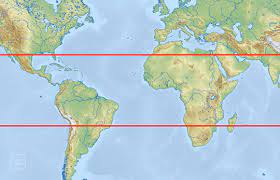When it comes to meteorological phenomena, we often come across the term “Horse Latitude”. In this article, we will explain what horse latitude and their historical significance, and the climatic conditions associated with them. Additionally, we will discuss their relevance in contemporary times.

1.Defining Horse Latitudes
Horse latitudes refer to subtropical regions located at approximately 30 degrees north and south of the equator. These regions typically experience calm and windless conditions, characterized by high atmospheric pressure and light variable winds. Sailors in the past, who relied on wind-powered ships, encountered difficulties and prolonged voyages in these areas, often leading to the loss of horses or other cargo due to scarce water and food supplies. This unfortunate circumstance gave rise to the term “horse latitudes.”
2.Historical Significance
The term “horse latitudes” can be traced back to the 19th century when sailing vessels navigated the world’s oceans. During long sea voyages, ships would sometimes become trapped in the windless zones near the horse latitudes. Lack of wind made it impossible for ships to progress, stranding them for days or even weeks. This predicament put a strain on supplies, leading to the throwing off cargo, including horses, to conserve resources and ensure the survival of the crew.
3.Climatic Conditions
The climatic conditions associated with horse latitudes are a result of atmospheric circulation patterns and the Earth’s rotation. At approximately 30 degrees north and south of the equator, the ascending warm air from the tropics cools and descends, creating a high-pressure zone known as the subtropical high. This high-pressure system inhibits the formation of significant weather systems, resulting in calm winds and stable atmospheric conditions.
The absence of prevailing winds in horse latitudes makes it challenging for ships to sail through these regions. The few winds that do occur tend to be unpredictable and vary in direction, making navigation difficult. Furthermore, the calm conditions contribute to increased evaporation rates, which exacerbate the scarcity of freshwater resources.
4.Modern-day Implications
In contemporary times, the term “horse latitudes” is not directly relevant to maritime navigation due to advancements in transportation technology. However, it remains a compelling aspect of meteorology and is often referenced in discussions surrounding climatology, historical maritime exploration, and even in popular culture.
Understanding the atmospheric dynamics in horse latitudes is crucial for weather forecasters, as it helps them predict and analyze weather patterns in surrounding regions. Additionally, the knowledge of horse latitudes can be valuable to aviation, as it aids pilots in planning flight routes and understanding the potential for turbulence or stable conditions.
Conclusion
Horse latitudes, once a challenging and treacherous phenomenon for sailors, now hold a fascinating place in our understanding of meteorology and historical maritime exploration. These subtropical regions of calm and light winds have left their mark on history, symbolizing the difficulties faced by early seafarers. While no longer a direct concern for modern-day navigators, horse latitudes continue to intrigue and serve as a reminder of the ever-evolving relationship between humans and the natural world.
Important Links